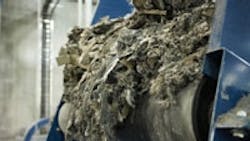Enterprising thieves have figured out that scrap means money, so why does that concept still elude some manufacturers? On any given day in urban America you can find a home that's been gutted for valuable copper piping and other materials that are sold as "scrap." But inside manufacturing operations legitimate scrap is oftentimes pitched, according to Mark Ripple, director of BBK Ltd., an international business advisory firm that helps manufacturers achieve efficiencies.
"Most of the time, depending on what material you're using, some plastics can be reground and reused, and some metal can be remelted or sent back to scrap metal suppliers," Ripple says, "but a lot of suppliers I see are still just throwing away the bulk in a dumpster."
The scrap is disposed either because it's not economical to reuse it, it's not in a reusable form, or it's not part of the company's culture, says Ripple. But that's not always the case. Most metals producers either reuse or sell their scrap, according to Nick Sowar, global steel leader at consulting firm Deloitte & Touche LLP. And plastics can be remelted or sold to businesses that can use it as a raw material, adds Daniel Schweller, a partner with Deloitte's M&A Transaction Services.
Shaw Industries Inc., one of the world's largest carpet manufacturers, sells yarn scraps and other waste to companies that convert the material into plastics. The process is part of the company's overall sustainability strategy, which began about eight years ago, explains Richard Ramirez, vice president of sustainability and environmental affairs.
He estimates the company has recovered "tens of millions of dollars" on waste-brokering activities. The company's recycling efforts resulted from relationships with manufacturers in its supply chain who could use the materials and recyclers.
About two years ago Shaw Industries established a waste-to-energy facility at its Dalton, Ga., plant where wood waste is used to generate steam. The plant utilizes 21,000 to 22,000 tons of carpet waste and sawdust from its wood flooring operations to generate steam for carpet dying. The facility, developed in conjunction with Siemens Building Technologies Inc., has been in operation for about two years. It required a capital investment of approximately $15 million and has saved the company about $1.5 million annually in steam generation.
It's a similar approach to the one taken by the Batesville Casket Co.'s Vicksburg, Miss., operations where the plant utilizes sawdust waste to heat wood-drying kilns. One of IndustryWeek's Best Plants in 2007, Batesville Casket also reuses defective wood scraps to create core panels for the casket's side.
This is where many manufacturers miss the mark, says BBK's Ripple. "One of the things you see all too often is when [manufacturers] don't understand the physics of the failure mode or don't understand how this thing is failing -- you guess on what the problem is, so you make engineering changes or process changes that really don't fix the problem."
See Also
About the Author
Jonathan Katz
Former Managing Editor
Former Managing Editor Jon Katz covered leadership and strategy, tackling subjects such as lean manufacturing leadership, strategy development and deployment, corporate culture, corporate social responsibility, and growth strategies. As well, he provided news and analysis of successful companies in the chemical and energy industries, including oil and gas, renewable and alternative.
Jon worked as an intern for IndustryWeek before serving as a reporter for The Morning Journal and then as an associate editor for Penton Media’s Supply Chain Technology News.
Jon received his bachelor’s degree in Journalism from Kent State University and is a die-hard Cleveland sports fan.
